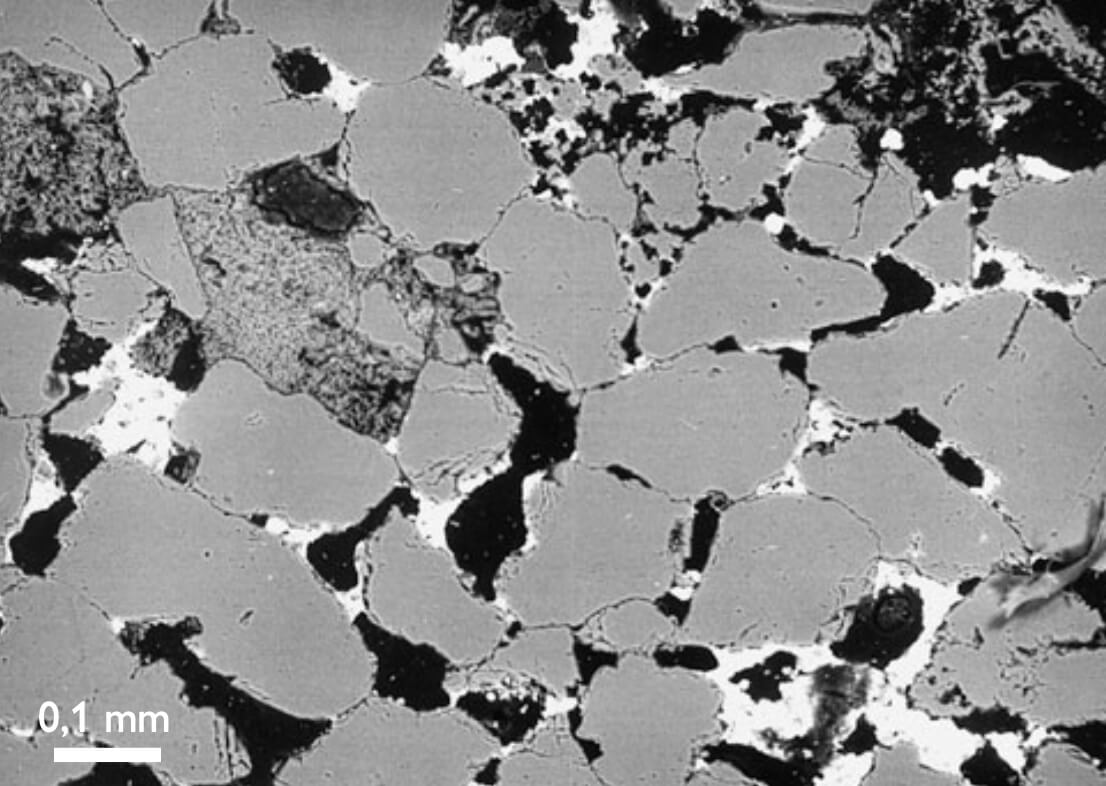
How to Cite
Share
Abstract
A cored sandstone interval from the Middle Jurassic Harald Field of the Danish North Sea was chosen for an investigation of the mineralogical sources for the gamma-ray activity, and with the purpose of determining how the Spectral Natural Gamma (SNG) log could be used as an indicator of reservoir quality. Core intervals of quartz arenites and quartz wackes were selected. Although no linear relationship was found between clay content and potassium (K), thorium (Th), or uranium (U), the K content characterises three discrete lithofacies. Lithofacies I has a grain-supported texture, with a predominance of quartz grains; only minor fine-grained matrix is present. Sandstones of lithofacies I have a low K content and most of the K is hosted in feldspar. Porosity varies between 23% and 28% and permeability is in the range 200–2000 mD. Lithofacies II sandstones have a grain-supported texture, with a predominance of quartz grains; fine-grained matrix fills the intergranular volume. Sandstones of lithofacies II have an intermediate K content, with K-feldspar, mica, and illite as the main sources. Porosity varies between 11% and 17% and permeability is in the range 0.4–25 mD. Lithofacies III has a matrix-supported texture with quartz grains floating in a clay-rich matrix. Samples from lithofacies III have the highest K signal. Illite and illitised kaolinite are roughly equal in importance as sources of K. Porosity is up to 11% and permeability up to 0.5 mD. The Th and U content of all lithofacies is governed primarily by the presence of heavy minerals; no apparent general relationship between U and Total Organic Carbon (TOC) was found. Comparisons between the core measurements of K, Th, and U, and the SNG log disclosed a discrepancy between the calibrations of laboratory and borehole measurements. For U the discrepancy contains an erratic element, whereas the difference for K and Th can be eliminated by correction factors. Thus, the conclusions based on laboratory measurements appear to be applicable to the log data, and, using corrected K values, the facies subdivision can be extended throughout the reservoir section based on the SNG log.
How to Cite
Share
Downloads
Editors: Jon R. Ineson and Finn Surlyk
The Jurassic rocks of Denmark and East Greenland record the evolution of two discrete portions of the Mesozoic rift complex, now separated by the North Atlantic Ocean. The Jurassic of Denmark and adjacent areas occurs mostly in the subsurface and research has thus focussed [...]










